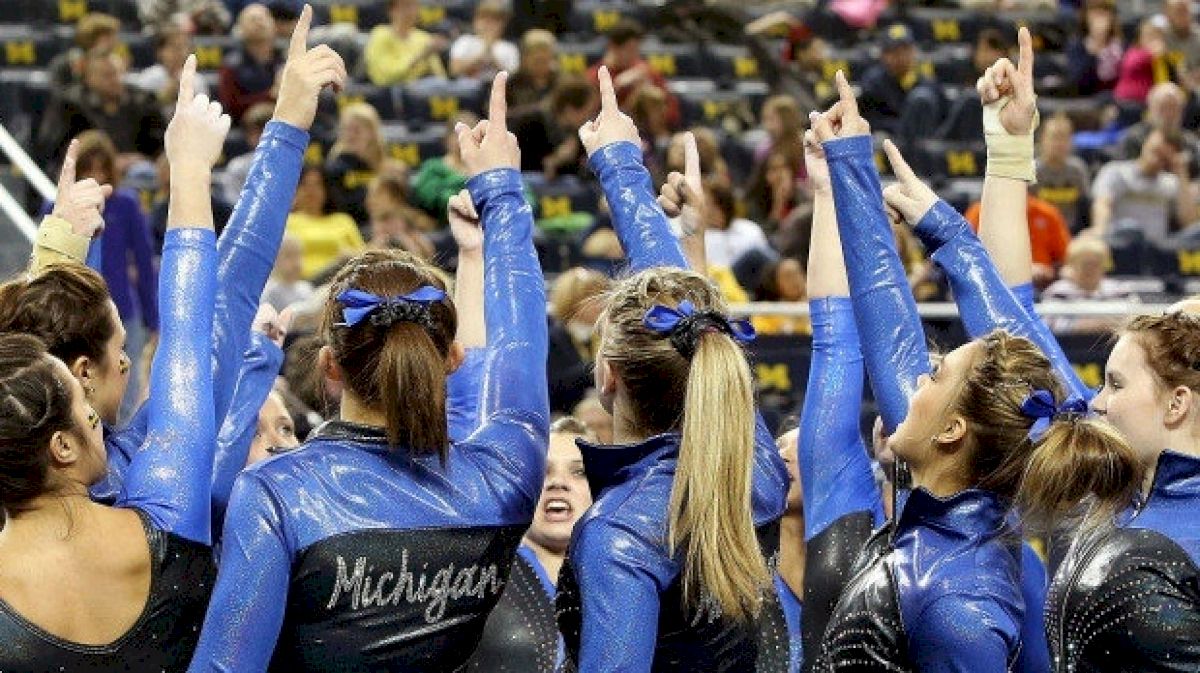NCAA Gymnastics: What You Need To Know
NCAA Gymnastics: What You Need To Know
The NCAA gymnastics season is upon us, and here are some of the key differences between college and elite.

You watched this summer as Simone Biles, Aly Raisman, Laurie Hernandez, Gabby Douglas and Madison Kocian dominated Olympic headlines during the Games and afterwards. Nearly four months later, it's time for more gymnastics. The NCAA season won't dominate the major news outlets like the Olympics, so here's a refresher on the key differences between the college and elite level on the competition floor.
Here's what you need to know:
Related:
2017 NCAA Women's Gymnastics Complete Schedule
Chayse Capps Leads The Top Five NCAA All-Arounders To Watch In 2017
Here's what you need to know:
The 10.0 is back (or rather, it never left)
After spending the summer keeping track of the good, great and poor scores in the elite, open-ended scoring system, the college scoring system should be far easier to understand. While we won't see the green, yellow and red symbols NBC provided, viewers will have a shot to see a perfect 10. Collegiate gymnastics never made the jump to using the open-ended system and instead operates by the 10.0 system. There are plenty of 9.9s among the top squads, though the scoring gets much tighter at conference championships, NCAA regionals and NCAA national championships. Regular-season meets are typically judged by two judges on each event, and both scores are averaged for the gymnast's score. Postseason meets are judged by four judges, and all four scores are averaged.Consistency > Difficulty
Unlike elite gymnastics, where there is both a difficulty score and an execution score, NCAA gymnastics has just one mark to combine the two. Athletes and coaches focus more on clean, consistent routines instead of having the most difficulty because having the most difficult routine isn't rewarded the way it is in elite competition. There's a very delicate balance in the risk versus the reward of having a difficult skill (like an "E" tumbling pass on floor). Routines are built with this in mind--while having the big skills is a "wow" factor, it might not be worth it if there will be a significant deduction as a result.Team, team, team
As the season goes on, you will hear plenty of college coaches and gymnasts especially talking about competitions and performances as being more a part of the overall team performance than an individual accolade. While individual titles are awarded at each meet, the athletes are focused more on how their performances help their team. Elite gymnastics is a lot more individualized--even in competitions that are team-oriented. Qualifications at world championships or Olympic Games have the individual aspect of who qualifies for event and all-around finals. You'll see plenty of team spirit during NCAA meets: lots of jumping, high-fiving and hugs after each performance. Floor exercise is a real treat too -- each member of the team knows her teammates' choreography and will do it along with the athlete on the floor.Six up, five count
College gymnastics teams are much larger than what you'll see at a team competition in elite gymnastics these days. While the elite teams seem to shrink smaller and smaller each cycle, the NCAA has kept its lineups the same. Six gymnasts compete on each event, with the top five scores counting. It gives a little bit of breathing room for teams to have a fall or a lower-scoring routine opposed to competitions like the Olympic or World team finals, which have a three-up, all-three-scores-count rule.Packed schedule
The NCAA competition schedule is intense. Athletes compete week in and week out with an occasional off-week to recover. Elite competition tends to have longer gaps between major competitions. For example, there were several weeks between the Secret Classic and P&G national championships and then between nationals and the Olympic Trials during 2016. That schedule is a little bit more condensed than what happens in non-Olympic years, when there is usually about a month between domestic meets. Because of the tightly packed schedule of collegiate meets, viewers often will not see athletes throwing their hardest skills right from the start of the season. Top teams will typically hold their difficult E-skill tumbling passes on floor until later in the season, as it allows the athletes to save their bodies during the grinding season.Related:
2017 NCAA Women's Gymnastics Complete Schedule
Chayse Capps Leads The Top Five NCAA All-Arounders To Watch In 2017